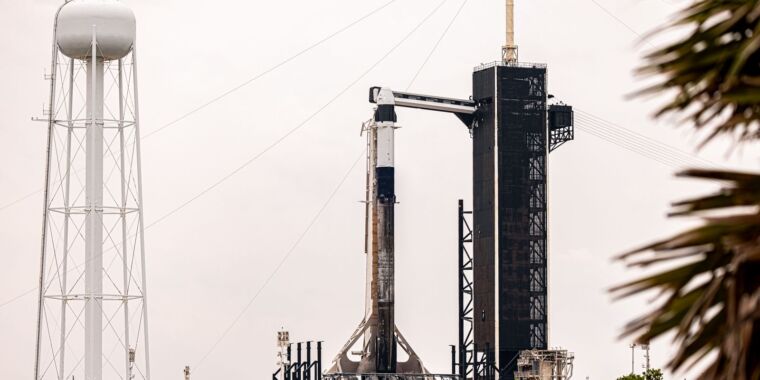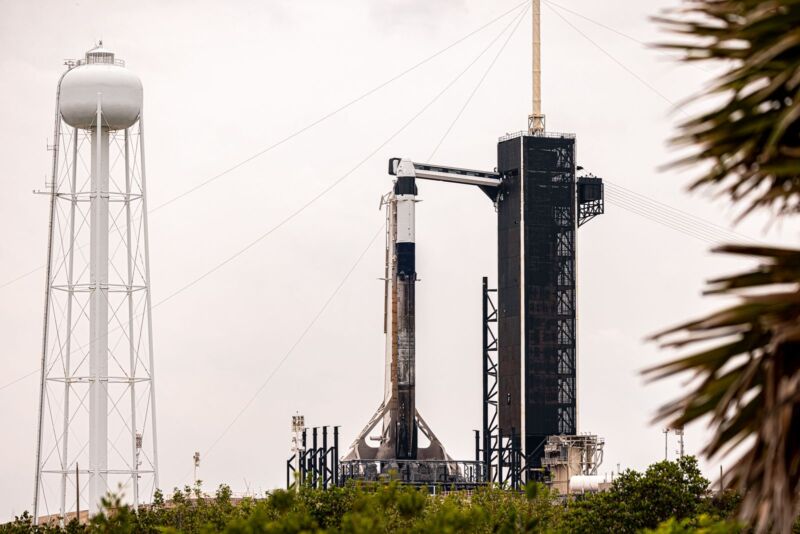

Trevor Mahlmann
Welcome to Edition 4.38 of the Rocket Report! We’re already in the second quarter of 2022, hard as it is to believe. This means that many companies with aspirations to debut new rockets this year, including United Launch Alliance, ABL Space Systems, Relativity Space, and Arianespace, are down to less than nine months to work with.
As always, we welcome reader submissions, and if you don’t want to miss an issue, please subscribe using the box below (the form will not appear on AMP-enabled versions of the site). Each report will include information on small-, medium-, and heavy-lift rockets as well as a quick look ahead at the next three launches on the calendar.

Rocket Lab ready for helicopter grab. After several experimental tests, Rocket Lab announced it will attempt a mid-air capture of the Electron rocket’s first stage for the first time. The company will make this attempt during its next flight, with a launch window that opens on April 19 for the “There and Back Again” mission to deploy 34 small satellites. After the first stage completes its boost phase, at 2 minutes and 30 seconds, it will separate and begin descending at speeds up to 8,300 km per hour.
Falling, spinning, catching? … Nominally, a drogue parachute should deploy at 13 km altitude, followed by the rocket’s main parachute at around 6 km altitude to dramatically slow the stage to 10 meters per second. As the stage enters the capture zone, Rocket Lab’s Sikorsky S-92 helicopter will attempt to rendezvous with the returning stage and capture the parachute line via a hook. If this is successful, Rocket Lab engineers and technicians will conduct a thorough analysis of the stage and assess its suitability for re-flight. Happy hunting, Rocket Lab! (submitted by Ken the Bin and Tfargo04)
Georgia spaceport back from the dead? In March, voters in Camden County, Georgia, overwhelmingly voted 78 to 22 percent to block the local government from buying 4,000 acres of land for a vertical launch spaceport. But some county officials apparently didn’t get the message. Now, says Steve Howard, Camden County’s administrator and project manager of Spaceport Camden, officials from Spearhead Capital will host a public workshop session with the county commission. During this session on April 7 they will discuss creating a special fund to collect money from private investors, a local television station reports.
Ignoring the public will … “We’re excited about hearing from this company next week; what their vision is and how they can align nicely with this public-private partnership opportunity that we think would be amazing to leverage,” Howard said. So far, the county has spent more than seven years and more than $10 million developing the Spaceport project. It does strike me as somewhat odd that local officials would pursue this project so vigorously after the public so greatly opposed it. (submitted by zapman987)
UAE leaning into the space sector. Over the next decade, the United Arab Emirates plans to invest more than $800 million in the private space sector to grow the country’s capabilities in space. Economic zones dedicated to space activities will be set up across Abu Dhabi, Dubai, and Sharjah to allow startups and established businesses to set up operations, The National News reports. The country seeks to support its commercial space industry through a series of public-private partnerships.
Suborbital launch, at least … “Some of the greatest private companies in space today, for example, SpaceX, wouldn’t have achieved the amazing success that they have today and pushed the boundaries of innovation if it wasn’t for the support of NASA and government contracts,” said Ibrahim Al Qasim, executive director of the UAE Space Agency. While it’s not clear if the country has any orbital launch ambitions, it is already working with Blue Origin to support the New Shepard suborbital space tourism system. (submitted by EllPeaTea)
SpinLaunch to fly NASA payload on test flight. NASA signed on to launch a payload using a suborbital kinetic energy-based system developed by California-based company SpinLaunch. The test flight, which is expected later this year, will “provide valuable information to NASA for potential future commercial launch opportunities,” SpinLaunch representatives told Space.com. That NASA is inking this mission through its Flight Opportunities Program is interesting because there is a fair amount of skepticism in the space industry about SpinLaunch’s approach.
Spin to win? … The company’s strategy involves accelerating rockets to tremendous speeds on Earth, using a rotating arm, and then flinging them skyward (great background here from Scott Manley). The launch vehicles will then light up their engines when they’re already high in the sky, greatly reducing the amount of fuel and hardware—and, by extension, money—needed to reach orbit. However, video of a test flight released by the company last November was not overly impressive. The company claims it will be ready for orbital flights by 2025. (submitted by Tfargo04 and Ken the Bin)
Astra reports operational progress. Fresh off the first successful delivery of commercial satellites into low Earth orbit, small-launch company Astra published a blog post on Thursday that aims to demonstrate its increasing operational efficiency. “This is our ultimate measurement that enables us to deliver for our customers,” wrote Bryson Gentile, the company’s vice president of operations. “We’ve been working toward decreasing the number of days between launches and we hope that this trend will continue.”
More rockets, fewer delays … In its post, the company showed both an increased launch cadence and higher rate of production of its Rocket 3 vehicle. Astra said it is currently producing a rocket a month and aims to increase this rate later in 2022. Astra also released other metrics showing that it is getting the hang of operations, noting that whereas its LV0007 attempt required 10 days for static fire and countdown activities, these activities were completed in two days for its most recent LV0009 mission. (submitted by Ken the Bin)